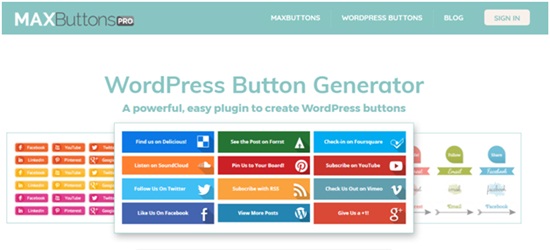Putting up a blog as part of a marketing campaign or to monetize content comes with the need to attract readers. You need to put up some effort in bringing in and keeping blog visitors. To do this, it would be helpful to get acquainted with some of the things that most likely annoy or drive blog readers away.
1. Too Many Advertisements
Yes, ads are a necessity for most blogs and almost everyone acknowledges such a fact. However, having too many of them is indubitably something that will irritate blog readers. The presence of excessive ads is arguably the top reason why potential and current blog readers get put off by some blogs. They are distracting. They annoy. They’re an eyesore.

Image credit: Pixabay
Ads help generate revenues but the opposite is achieved when you have too many of them. They’re not necessarily as bad as what some overzealous anti-ad pundits would tell you but certainly you’re not supposed to have too many of them. Pop-up ads, in particular, are frustrating and extremely annoying. Visitors are likely to perceive your blog as a low-quality spam-filled and malware-infected site that does not offer anything valuable, something that is mainly intended to attract clicks for the monetization.
How many is too many? For now, there is no standard that will adequately answer this question. Google has its own set of guidelines, but these guidelines are limited to Google’s own ads. It would be a good basis aiming to have a site that will not make visitors use ad-blocking plugins on their browsers. Ascertain that no ad becomes too conspicuous and disruptive. As much as possible, shun pop-up ads, minimize the number of banner ads, minimize animated ads, and also tone down text link ads. Don’t try to make ads appear like they’re part of your content but also don’t make them too distinctive that they appear highlighted, taking away attention from your content or ruining
2. Slow Page Loading Time
Another top source of annoyance or irritation for blog visitors is poor page loading time. Nobody likes to wait for a page to load for more than a couple of seconds. Based on surveys conducted by Gomez.com and Akamai, close to half of those who access websites expect pages to load within 2 seconds or even faster. Google’s own study also reveals that around 53% of mobile web users abandon sites with more than 3 seconds of loading time. To avoid slow loading pages, it’s important to optimize pages or the blog as a whole. Post images and thumbnails should be in their optimum file sizes. Avoid putting unnecessary animations. Don’t autoplay multimedia content. Ensure a clean code for your blog’s theme. Additionally, be sure to have the right hosting service for your blog. If you are using WordPress, for example, ascertain that your WordPress hosting is fully optimized: this includes having a geo-friendly data center at your disposal, including an assortment of hosting-approved plugins to choose from.
3. Poor Content
Definitely, content quality matters and it’s not just something that is important in establishing a blog’s credibility. The quality of the content you post is also important to avoid driving away current and potential readers. Bad grammar, wrong spellings, false “facts” and unverified information (being passed on as true), and a writing style that does not match the theme of the blog or the tone of the topics being discussed: all of these have the potential to irritate readers. Of course, occasional mistakes are unavoidable but having the same mistakes over and over again can already be frustrating. There’s also the issue with copied or stolen content, which may even lead to a legal problem. Moreover, clickbaits or misleading metas and thumbnails are also bound to irk blog visitors.
4. Poor Design and Aesthetics
The appearance of a blog can also contribute to how readers perceive your blog. It’s not an issue that is of similar weight as poor content, but it’s certainly significant enough to be worth mentioning here. An unplanned high contrast blog theme can be an eyesore to some readers, especially older people. Blogs that don’t make navigation easy is also annoying. Visitors who couldn’t easily find the buttons to go to the homepage or the next set of posts will likely leave the blog unless the content they are seeing are too compelling that they have to exert extra effort to find their way around. You can use a suitable and attractive WordPress button set to make navigation and call-to-action placements easier.

Image credit: MaxButtons site
On the other hand, an oversized header image, especially one that makes it difficult to find the navigation links/buttons is also a problem. Moreover, a blog that stingily shows content per page to maximize the number of clicks on the blog, is bound to irk readers. Understand how frustrating it is to keep repeatedly clicking to see one picture or just a few paragraphs of a post in a page and having to click “Next” again to see more.
It’s also important to take responsive web design into account. This is to make sure that your blog looks good regardless of the device or display size used to access it. Blogs whose layouts get jumbled when viewed in different resolutions (display) are a no-no.
5. Overeager Promotion
It’s typical doing promotional activities for a blog but having too much of it can also irritate readers. Make sure you don’t go overboard with your marketing efforts especially if you are engaged in strategies like paying other bloggers to write about your blog or to insert links (to your blog) in their posts, promoting your blog through comments sections, and advertising through text and banner ads. Constantly inviting people on social media to read your posts can also be annoying. Regularly posting abridged versions (teasers) of your blog posts on social media is acceptable but actively asking everyone to read your posts is already too much and will only discourage potential readers.
The points discussed here are arguably the most common reasons why visitors quickly leave blogs or perceive some blogs to be a waste of their time. They should guide you in creating a more attractive blog that can retain readers, encourage subscribers, or get regular visitors. At the very least, if you can’t make visitors love your blog, you should not give them reasons to dislike it or to quickly leave it. Do you have anything you want to add to the list?
About the author
Tim Erinwright is a UK-based web developer at his freelance gig WRightDigital, and a self-professed tech geek and writer. When he’s not creating magic on WordPress, he can be found analyzing the “Song of Ice and Fire” books, and of course hiking.
Source: https://www.bloggersentral.com/2017/08/things-annoy-drive-away-blog-readers.html






